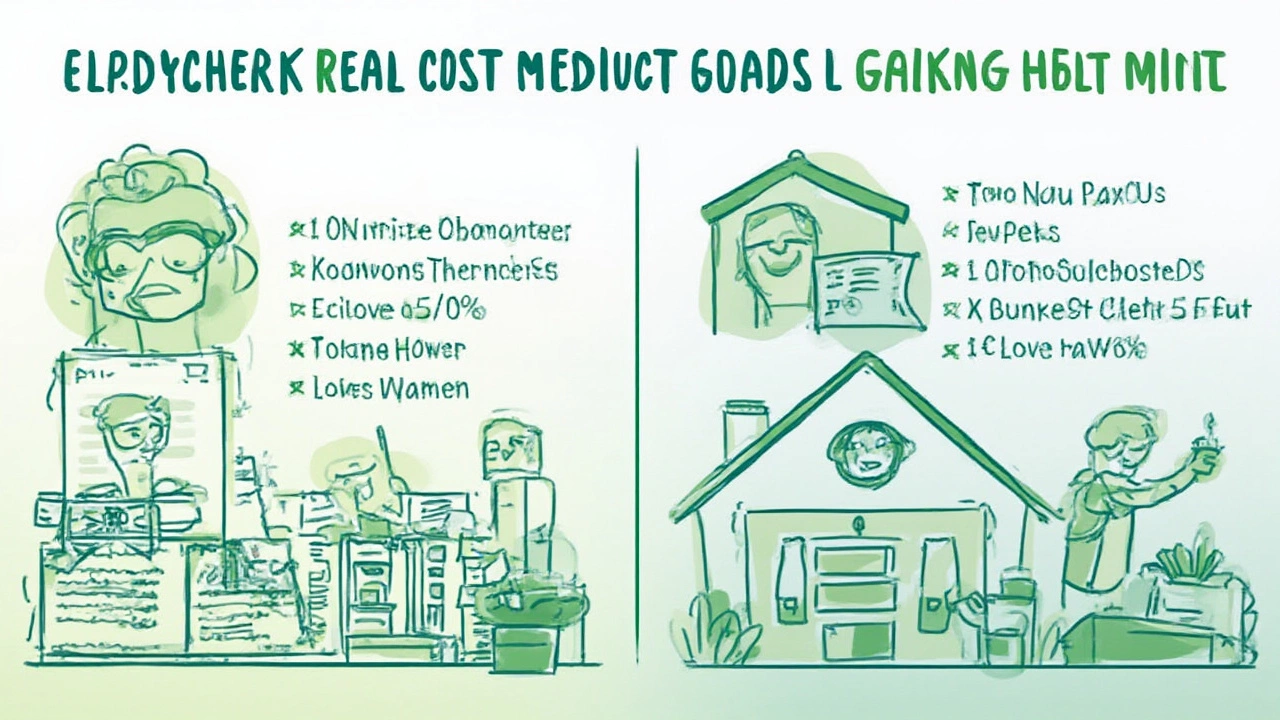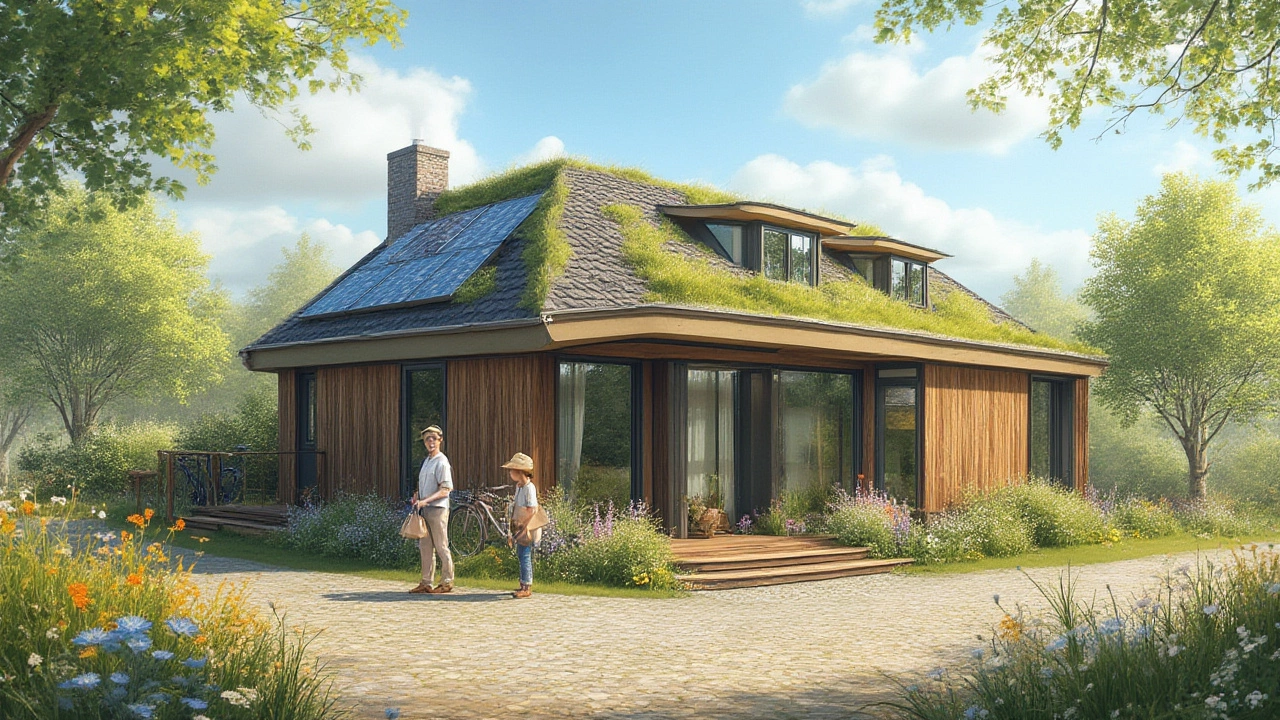If you’ve ever scrolled through dreamy Pinterest boards filled with green rooftops, floor-to-ceiling windows, and walls that trap the summer cool, you’ve probably wondered: do eco-friendly houses really cost a fortune? Or is it just a myth cooked up by old-school realtors and your skeptical uncle at Thanksgiving? The truth is messier—and way more interesting—than a simple yes or no. Right now, in 2025, sustainability in housing isn’t just a feel-good trend—it's a hard-nosed business deal, a long game, and sometimes, a game of chicken with your bank account. Let’s press past the slogans and the recycled bamboo fads and get honest about what you’re actually paying for when you shoot for a green home.
What Really Makes a House “Eco-Friendly” (and Where the Money Goes)
So, what counts as “eco-friendly” in the housing world today? Forget recycled water bottles turned into wall art—real green homes rely on a combo of tighter construction, smart technology, and sustainable materials. There’s a spectrum here. At one end, you get the basics: LEDs, low-flow toilets, extra insulation, and rooftop solar. At the other, there are homes that chase LEED Platinum certification, use rammed earth or hempcrete, and pretty much treat the grid as optional. You get to pick your poison (or, more accurately, your price tag).
Back in 2021, the U.S. Department of Energy estimated that building a custom green home costs about 5%-10% more than a comparable standard house. But those numbers blur fast, thanks to local labor costs, material spikes (looking at you, pandemic-era lumber), and how ambitious you get with gadgets and certifications. Fast forward to summer 2025, eco-friendly features are still pricier up front, but prices are noticeably shrinking. Solar panel costs? Down by 17% just since 2022, according to Statista, mainly thanks to global competition and better tech. Heat pumps: dropping in price, too. The catch? These savings mostly help new builds, not retrofits.
Building green isn’t just about materials, though. Think of a high-efficiency HVAC system versus a regular setup. A home with Energy Star-rated appliances, super-well-sealed windows, and recycled denim insulation costs more to put together—but your monthly bills look a lot lighter. For those who want the cold, hard numbers, here’s how the costs break down in a typical eco-friendly house versus a conventional one right now:
| Feature | Traditional Home | Eco-Friendly Home |
|---|---|---|
| Upfront Construction Cost (per sq ft) | $180 - $275 | $200 - $350 |
| Insulation | Fiberglass batt: $0.65/sq ft | Recycled cellulose: $1.20/sq ft |
| Windows | Double-pane vinyl: $350 each | Triple-pane Low-E: $600 each |
| Solar Panels (6 kW system) | N/A | $11,000 (after incentives) |
| Annual Energy Bills | $2,200 | $500-$800 |
| Maintenance (per year) | $1,500 | $1,100 |
Notice those big differences in annual bills? They stack up quickly. You might pay $15,000 extra at the start, but analysis by Lawrence Berkeley National Lab found that green homes can recoup their premium in 7-12 years just on energy savings alone. Push that out over a 30-year mortgage and it’s not even close—eco-friendly homes win, hands down.
One thing people forget: local rules can help or hurt your budget. California, for example, requires all new homes to have solar panels, which adds $12,000 upfront but slices energy bills drastically. In places where green tech is less common, you may pay more for hard-to-find contractors or specialty materials. If you’re in a rural area, off-grid options might add even more at first, but mean no bills ever again. Bottom line: where you build changes what you pay.

The Hidden Costs (and Wild Savings) of Going Green
OK, so eco-friendly doesn’t mean “cheap” on day one. But that’s just the obvious stuff. Dive into the details and a lot of surprises pop up. For starters, green homes get breaks that regular homes don’t usually score. Federal tax credits and local utility rebates have been beefed up since 2024, so if you add a solar system, geothermal heat pump, or battery wall, you can cut a big chunk off the sticker price. In fact, right now federal tax credits can cover up to 30% of your installed solar costs, and heat pumps qualify for similar perks. Some cities, like Austin and Boston, offer extra sweeteners for water recycling systems and green roofs. If you’re shopping in Europe, some countries flat-out offer near-zero interest ‘green’ mortgages. It’s worth checking your city or state website for the latest deals.
But incentives are just half the story. The real long-term bonus comes from lower running costs. Want specifics? An EPA-backed study from 2023 showed that homes with basic upgrades—think good windows, insulation, and smart thermostats—saw their energy bills drop by around 50% on average. For all-electric homes loaded with solar, many homeowners end up “net zero” (producing as much power as they use), or sometimes even earn credits back from the grid.
Then there’s the stuff people rarely talk about: health. Green homes are usually built with nontoxic paints and adhesives, better air exchangers, and tighter envelopes, so they keep out pollen, dust, and humidity more effectively. This matters—if you or your kids have asthma, you’ll notice the difference. While it’s hard to slap a price tag on fewer sick days, some insurance companies are starting to offer small discounts for energy-efficient and healthy-home features. The resale market is starting to notice, too. Redfin reported in July 2025 that resale values for certified green homes are rising 8-12% faster than their conventional neighbors almost everywhere in the U.S.
Still, there are some downsides. For one, custom green features aren’t always familiar to local appraisers—they might not recognize the value of a greywater system or green roof, so getting fair financing can be tricky. Maintenance might look a little different, too. Your solar inverter will likely need to be swapped after 10-12 years, and rainwater tanks and pumps need checking. You have to get a little more hands-on—think of yourself as a low-key plant parent, but for your house. You can’t just ‘set it and forget it’ in every case.
One thing that makes a big difference? DIY skills. People with some construction know-how can shave costs by doing smaller upgrades themselves—installing a smart thermostat, swapping in water-saving fixtures, or putting up thermal curtains. Sites like Green Building Advisor or Home Energy Saver offer step-by-step guides if you want to get your hands dirty without going full contractor mode. If you want to retro-fit an older home, replacing lighting and appliances usually pays for itself in just 4-6 years, even without fancy upgrades.
So, the big takeaway here: eco-friendly houses cost more up front—how much depends on your ambitions, your location, and whether you’re willing to make a few calls and cash in on rebates. But once you’re living in one, you’re paying a lot less each month, breathing cleaner air, and—if the market trends keep up—adding extra resale value. The catch, as with anything worth having, is patience and a willingness to put in the research. If you want a fast win, try basic upgrades in your current place. Want to play the long game? That green dream house might just pay for itself—if you’re smart about your choices.

Tips for Budgeting and Building an Affordable Green Home
Building or buying an eco-friendly house doesn’t have to mean emptying your bank account or settling for a tiny off-grid cabin. It’s about making informed swaps, grabbing every break you can, and not falling for shiny upgrades that don’t fit your lifestyle. Here’s how to actually trim the bill—and keep things genuinely sustainable.
- Prioritize insulation first. The single best bang-for-buck green upgrade is improved insulation. A well-sealed, well-insulated home holds temperature better, slashing heating and cooling costs about 30%—and you won’t need to buy as big of an HVAC system.
- Shop around for local incentives. Before you design your home or green upgrade, check federal, state, and city websites for rebates and credits. Programs get updated all the time; a 2025 study found that homeowners who combined state and federal incentives shaved an average of $18,000 off their build costs.
- Pick your battles on materials. Bamboo floors and rammed earth walls look cool, but they’re not always the best use of your budget. Focus first on energy systems and envelope upgrades, then splurge where it matters in your climate (like cool roofs in Texas or triple-glazed windows in Michigan).
- Go smaller, go smarter. Every extra square foot costs money to heat, cool, and build. Open-plan layouts, built-ins, and daylighting tricks make smaller spaces feel bigger—without padding your final bill.
- Embrace phased upgrades. Start with easy swaps: high-efficiency appliances, LEDs, and low-flow toilets. Later, add solar panels, heat pumps, or battery storage when your budget recovers or new incentives appear.
- DIY where possible. Changing out lighting, swapping faucets, or adding simple weatherstripping is well within reach for most handy folks. YouTube and blogs like The Green Home Guide break down even trickier projects for beginners.
- Hire the right pros. Pick architects and builders who have real experience in green homes. Ask to see their certifications (like LEED-AP or Passive House), and get references. A 2024 study found that experienced green builders consistently delivered projects 8% under budget versus newbies learning the ropes.
One trick? Never chase “perfection.” The greenest home is often just the one that uses less energy, wastes less water, and fits you—not trending on Instagram. Most people save more money picking a handful of smart, lasting upgrades rather than going all-out on exotic building systems. Focus on what works long-term, both for your wallet and the planet.
Lastly, if you’re buying instead of building new, look for homes with third-party certifications like Energy Star, LEED, or Passive House. These badges aren’t just for show—they translate into real, tested savings and higher resale value, even if you didn’t install the upgrades yourself. If you want something custom, start small: build less, upgrade wisely, and pocket the savings. Your future self—and bank account—will thank you.
